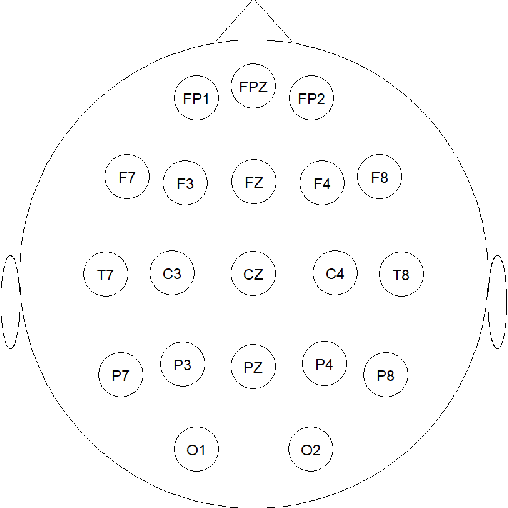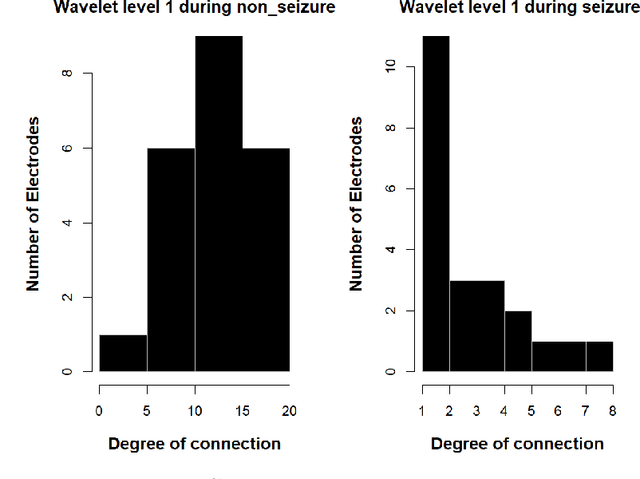Paul Grant
Seizure detection from Electroencephalogram signals via Wavelets and Graph Theory metrics
Nov 28, 2023Abstract:Epilepsy is one of the most prevalent neurological conditions, where an epileptic seizure is a transient occurrence due to abnormal, excessive and synchronous activity in the brain. Electroencephalogram signals emanating from the brain may be captured, analysed and then play a significant role in detection and prediction of epileptic seizures. In this work we enhance upon a previous approach that relied on the differing properties of the wavelet transform. Here we apply the Maximum Overlap Discrete Wavelet Transform to both reduce signal \textit{noise} and use signal variance exhibited at differing inherent frequency levels to develop various metrics of connection between the electrodes placed upon the scalp. %The properties of both the noise reduced signal and the interconnected electrodes differ significantly during the different brain states. Using short duration epochs, to approximate close to real time monitoring, together with simple statistical parameters derived from the reconstructed noise reduced signals we initiate seizure detection. To further improve performance we utilise graph theoretic indicators from derived electrode connectivity. From there we build the attribute space. We utilise open-source software and publicly available data to highlight the superior Recall/Sensitivity performance of our approach, when compared to existing published methods.
EEG Signal Processing using Wavelets for Accurate Seizure Detection through Cost Sensitive Data Mining
Sep 22, 2021



Abstract:Epilepsy is one of the most common and yet diverse set of chronic neurological disorders. This excessive or synchronous neuronal activity is termed seizure. Electroencephalogram signal processing plays a significant role in detection and prediction of epileptic seizures. In this paper we introduce an approach that relies upon the properties of wavelets for seizure detection. We utilise the Maximum Overlap Discrete Wavelet Transform which enables us to reduce signal noise Then from the variance exhibited in wavelet coefficients we develop connectivity and communication efficiency between the electrodes as these properties differ significantly during a seizure period in comparison to a non-seizure period. We use basic statistical parameters derived from the reconstructed noise reduced signal, electrode connectivity and the efficiency of information transfer to build the attribute space. We have utilised data that are publicly available to test our method that is found to be significantly better than some existing approaches.
Signal Classification using Smooth Coefficients of Multiple wavelets
Sep 21, 2021



Abstract:Classification of time series signals has become an important construct and has many practical applications. With existing classifiers we may be able to accurately classify signals, however that accuracy may decline if using a reduced number of attributes. Transforming the data then undertaking reduction in dimensionality may improve the quality of the data analysis, decrease time required for classification and simplify models. We propose an approach, which chooses suitable wavelets to transform the data, then combines the output from these transforms to construct a dataset to then apply ensemble classifiers to. We demonstrate this on different data sets, across different classifiers and use differing evaluation methods. Our experimental results demonstrate the effectiveness of the proposed technique, compared to the approaches that use either raw signal data or a single wavelet transform.
 Add to Chrome
Add to Chrome Add to Firefox
Add to Firefox Add to Edge
Add to Edge